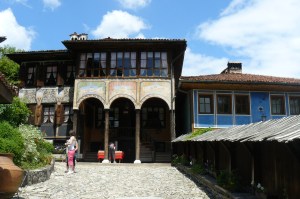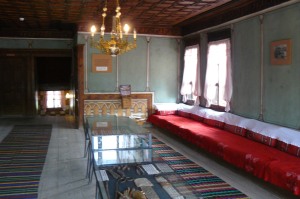Find out how a pro traveler and journalist Anne-Sophie sees Bulgaria as a travel destination.

Anne-Sophie Redisch
Anne-Sophie Redisch is a bilingual travel writer who loves hopping off a train in a new city. Her two daughters often come along, enlivening the travel experience. She has lived in the USA, New Zealand, and Norway, and her work appears regularly in in-flight magazines and various Scandinavian and English media. She blogs at Sophie’s World and tweets as SophieR
Hi Sophie, first of all tell me where are you now and where are you traveling next?
Right now, I’m in Oslo, Norway. Immediate plans include a summer road trip in Cornwall with my kids.
You’ve been to Bulgaria twice. Why Bulgaria and why twice?
Ever since I was a kid, I was intrigued by the mysterious countries hidden behind the Iron Curtain, and especially by the Black Sea. I remember seeing a Dracula film many, many years ago, where the coffin containing the vampire arrived in Varna. It sounded very exciting. So Varna is where I went that first time. I travelled on my own and spent days just walking around that maritime city. It was 1991 then, just after the fall of the curtain, but it still had an enigmatic feel to it.
The second time, 14 years later, I was curious to see how the country had changed. Also, I wanted to let my daughters see the Black Sea. So Bulgaria was an easy choice.
Which places did you visit in Bulgaria and what impressed you the most during your visits?
In 2005, we stayed in Sunny Beach, which tempted with good beaches; important when travelling with kids. The beach was very nice, but also very crowded, so whenever I could get the kids away from the water, we would go to the beautiful walled town Nesebar, right across the water. Nesebar has such an interesting history and gorgeous architecture. We loved walking around in the cobbled streets, especially in late afternoon when most of the day-trippers had left. One day, we went to Sozopol as well, a laid-back hippy-ish town, also very nice.
I would have to say the friendly Bulgarians impressed me the most, though. My then 4-year-old was completely spoiled by everyone we met, in every shop, every restaurant.
Also, I think the proportion of beautiful people is higher in Bulgaria J. Oddly, many seemed to have an eye colour I haven’t seen anywhere else; sort of a grey-blue-green, like the colour of the ocean on a slightly overcast day.
Your first visit was long time ago and your second visit was more recent. How has Bulgaria changed during this interval in the eyes of a foreign traveler?
I thought Bulgaria of 20 years ago was wonderfully anti-materialistic. People seemed to be slightly cautious and it was a bit more difficult to communicate then, as many didn’t speak English or German. In 2005, that had changed completely. Bulgarians seemed more outgoing, especially the young people.
If you decide to visit Bulgaria again where would you like to go?
Lots of places I haven’t yet seen, including the capital Sofia. Mostly, I’d like to head for the mountains, though; the Rodopi or Rila Mountains during autumn would be amazing.
I’d also like to return to Nesebar. It would be in autumn too, I think. I’d be on my own and live in one of the old National Revival houses along those cobbled streets. I’d eat lots of delicious Shopska and sit and watch the ocean.
What do you think Bulgarians should focus on in order to attract more travelers?
Perhaps focus on more nature-oriented and exploring travellers. Also, Bulgaria has a long and interesting history that might not be very well-known outside the country. I see Varna is aiming for European Capital of Culture status in 2019. That should bring in a larger variety of visitors as well.
Read travel articles by Anne-Sophie Redisch at Sophie’s World.















